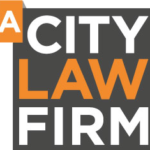Intellectual property is typically one of the most important and valuable assets of any business.
 Intellectual property (IP) is typically one of the most important and valuable assets of any business. It can be found in anything you have created or designed such as a product, software, logo or even the business name itself.
Intellectual property (IP) is typically one of the most important and valuable assets of any business. It can be found in anything you have created or designed such as a product, software, logo or even the business name itself.Before you can protect your IP, you need to be able to identify what IP you own and determine whether it is capable of being registered. You should also identify the jurisdictions you are potentially going to operate in, so you can protect future markets as well.
Below is a summary of the most common IP protection methods that might be suitable for you and your company:
Trademarks
Trademarks can be a logo, name or slogan and should be registered to deter anyone else using your brand. Owning the web domain or company name is not enough and could enable someone to potentially stop you using your own name, resulting in serious financial issues if you are forced to re-brand.
In the event someone does use your trademark without permission, you can take legal action and if your IP is not registered, you still have protection from ‘passing off’. This is where someone else attempts to mirror your name or branding and competes with you, by allowing others to believe they are you.
A patent
A patent is a form of protection for an invention and needs to be registered before the product enters the public domain. Patents are for new and unique creations and can take some time to obtain. This can include anything from software, an app or an actual physical operating invention.
You should post your blueprints to yourself in a sealed, dated envelope, to hold as evidence of what you created and when. Whilst the patent is undergoing approval this prevents someone passing off your invention as their own and is key evidence if action becomes necessary.
Always make sure you have suppliers, contractors and contributors sign a non-disclosure/confidentiality agreement so your ideas are kept confidential. If someone tries to pass on knowledge before the registration you will have evidence of your ownership and also a legally binding agreement to enforce upon.
Copyright
This is the automatic protection you have for anything that you create including photographs, software, web-content and music.
If you have hired a developer or designer to create a product you should ensure that there is a transparent agreement in place to assign in full, all the intellectual property rights to you upon payment or completion, as these do not automatically transfer to you.
If you engage employees to create IP during their employment, this will automatically be yours but you should ensure these provisions are outlined in their employment contracts for added protection. Having this outlined will also allow you to govern IP created in their spare time, which may utilise your knowledge and resource.
Having a non-compete clause also means that if they terminate their employment with you they cannot take this knowledge and create new IP, which they can themselves sell on.
Intellectual property in your software
There are significant disadvantages in relying on copyright to try and protect your software. Copyright protects only the ‘expression’ of the software as opposed to the idea itself. This means that it is very difficult to protect the idea behind your software or product. Copyright also cannot protect certain parts of your software, including its interface, functionality or programming language. This means, in short, provided your competitor does not copy your actual coding or structural design it is very difficult to take action against them.
The length of protection under copyright is based on the author. Where the author is known the protection is for 70 years from the end of year in which the last author of the work dies. Where the copyright is from computer-generated work it will last for 50 years after the end of the year in which the work was made.
Using your intellectual property
You can use your IP to help secure investment. However, you can also permit someone else to use it and pay you for this right. This right is granted under a licence. A licence should be drafted correctly to protect your position by ensuring the user is fully aware on what terms they can use the IP, on what terms you choose to terminate this right and to protect your full ownership.
Infringement
If someone uses your IP without your permission there are steps you can take, including attending mediation to resolve the issue amicably or taking legal action. Action can be in the form of an injunction to have them immediately cease its use, seek damages for your losses and the immediate return or destruction of your IP. If you think someone is using your intellectual property, it is important that you take immediate steps.
Monitoring
If IP is a significant part of your business we suggest you employ the services of a monitoring service. They will check your registered jurisdictions and make sure no one seeks to use, infringe or register your IP or too close to your IP, that could amount to passing off or an infringement. They notify you immediately of any concerns and give you notice to action immediately.
With IP theft on the rise, it’s important to know your options but if you’re not sure what you own or the type of protection required, always seek professional advice. It is also worth mentioning that a company is never too embryonic for IP protection, so consider your options today.

